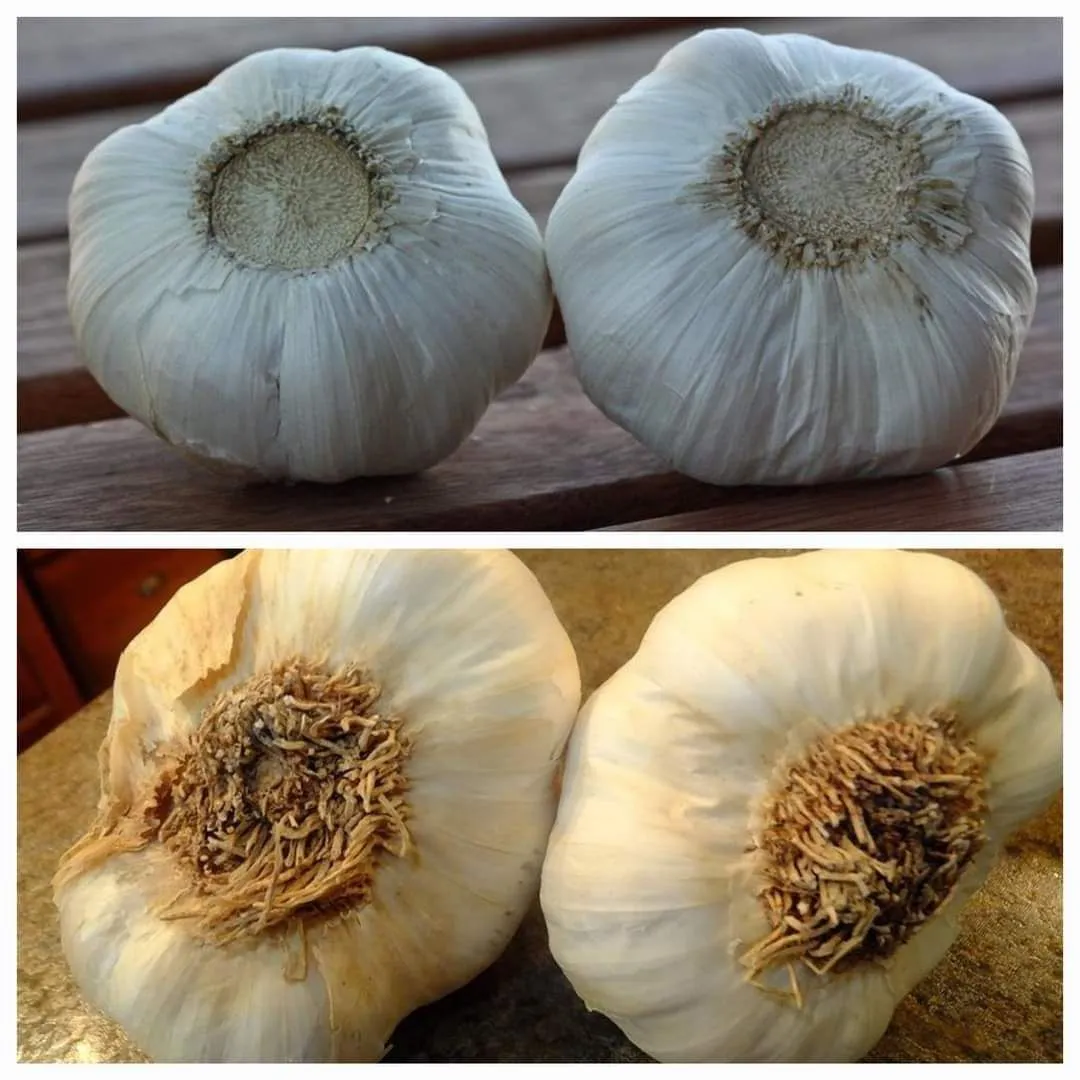Garlic is a staple in kitchens around the world, known for its bold flavor and numerous health benefits. Whether you’re using it to season a savory dish or enjoying it for its medicinal properties, garlic is a kitchen essential. However, something many consumers may not realize is where their garlic actually comes from—and the process it undergoes before reaching the grocery store. If you’re buying garlic without roots, chances are it’s imported, most likely from China. In this article, we’ll explore why garlic is imported, what makes rootless garlic different, and why some imported garlic is treated with bleach.
Garlic Without Roots: A Sign of Importation
If you’ve ever purchased garlic from a supermarket and noticed that the bulbs have no roots at the base, it’s a clear indicator that the garlic is likely imported. While domestic garlic is available in the U.S., especially from local farmers or specialty stores, a large percentage of garlic sold in mainstream markets is imported. In fact, about 80–90% of garlic in U.S. supermarkets comes from abroad, with China being the largest exporter.
Why do so many supermarkets stock imported garlic? The answer lies in price and availability. Garlic is grown in many parts of the world, but China dominates the global garlic market, producing more than half of the world’s supply. It is also cheaper to import garlic from China due to lower labor and production costs. As a result, American consumers often find imported garlic in their kitchens, even if they didn’t realize it.
U.S. Agriculture and Rooted Produce
In the U.S., agricultural regulations are strict when it comes to importing produce with roots. According to the U.S. Department of Agriculture (USDA), rooted produce (such as garlic) is not allowed to be imported into the country because it could bring in harmful pests, diseases, or contaminants that may affect domestic agriculture. This rule is designed to protect U.S. farms and ensure that imported plants don’t introduce new threats to local crops.
That’s why when you purchase garlic in the U.S., if the bulb has roots, it’s likely domestically grown. Garlic grown in the U.S. is typically harvested with its roots intact, making it distinguishable from the rootless bulbs commonly found on supermarket shelves. So, if you’re looking for locally grown garlic, be on the lookout for bulbs with roots, which are more likely to be fresh and grown in your region.
Imported Garlic: Why Is It Bleached?
An important distinction between imported garlic and domestic garlic is the bleaching process. Imported garlic, particularly from China, is often treated with bleach to prevent sprouting during storage and transportation. This practice helps extend the shelf life of garlic, especially since garlic imported from overseas can take weeks to arrive at your local store.
Bleaching is done by dipping garlic bulbs in a chlorine solution, which helps to preserve their appearance and prevent the natural sprouting process. While this makes garlic last longer and appear fresher on store shelves, it also raises concerns for some consumers, particularly those who are concerned about chemicals used in food production.
Though the U.S. Food and Drug Administration (FDA) regulates food safety, some people prefer to avoid bleach-treated produce for health reasons. The good news is that domestic garlic is not treated with bleach, as it doesn’t face the same long shipping times and is typically sold fresher.
How to Tell if Your Garlic is Imported or Domestic
If you’re concerned about the origin and treatment of your garlic, there are a few ways to determine whether it’s imported or domestic:
- Look for Roots: As mentioned, garlic with roots is usually domestic, as U.S. agriculture doesn’t allow rooted garlic to be imported. If your garlic has roots, it was most likely grown in the U.S.
- Check the Label: Many specialty stores and farmers’ markets will clearly label garlic as “grown in the U.S.” or even specify a particular state of origin, such as California. Imported garlic, particularly from China, might not always be labeled, so it’s worth asking the store clerk for clarification.
- Smell and Texture: Fresh, domestically grown garlic tends to have a stronger, more pungent aroma and firmer texture. Imported garlic may sometimes lack the same intensity in flavor and may feel drier due to the shipping and storage process.
- Price: While price is not always a reliable indicator, U.S.-grown garlic is often more expensive than imported garlic due to higher production costs.
The Benefits of Choosing Domestic Garlic
There are several benefits to choosing domestically grown garlic over imported options:
- Fresher and Healthier: U.S. garlic is typically fresher because it doesn’t undergo long-distance shipping. Fresh garlic is more likely to retain its natural oils, flavors, and health benefits.
- Supporting Local Farmers: By purchasing garlic from local or regional farmers, you’re supporting American agriculture and promoting sustainable farming practices.
- No Bleaching: Domestic garlic doesn’t undergo the bleaching process that imported garlic often does, ensuring that it is free of chemicals used in preservation.
- Taste and Quality: Many chefs and food enthusiasts argue that domestic garlic has a superior flavor compared to its imported counterpart, making it a better choice for those who are serious about cooking.
Conclusion: Make an Informed Choice
While garlic is a commonly used and beloved ingredient, many consumers may not be aware of the complexities behind the garlic they purchase. If you’re concerned about the origin of your garlic and prefer to avoid imported options, looking for bulbs with roots or buying locally grown garlic is the best choice. Not only will you enjoy fresher, chemical-free garlic, but you’ll also support local agriculture and ensure that your kitchen staples are as healthy and flavorful as possible.
Next time you’re shopping for garlic, take a moment to check the roots and labels. Being informed about where your food comes from can help you make healthier choices and support more sustainable practices in agriculture.
